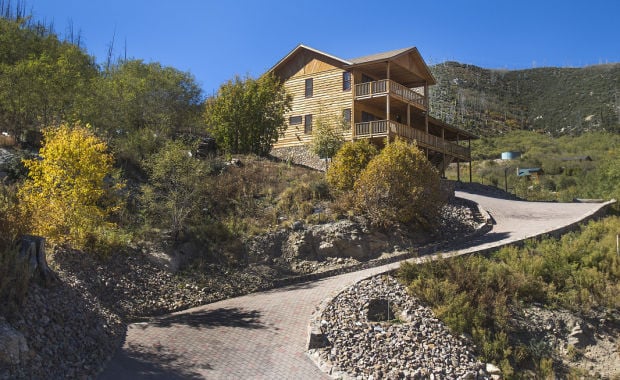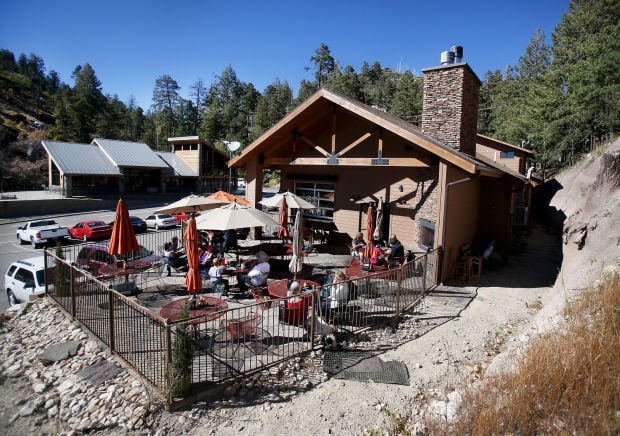It’s a natural daydream for longtime Tucsonans to drift into when they travel up the mountain to Summerhaven.
“It’ll be so nice when the forest grows back. I can’t wait till it looks like it used to, with all the shady pines.”
That thought drifted through my mind when I was on Mount Lemmon on Labor Day. Wildfire destroyed much of the mature forest around Summerhaven in 2003, and young ponderosa pines are growing back. But the reality is, we may never see that same, pine-shaded Summerhaven again.
Around the globe, the plants that make up our familiar natural landscapes are poised to shift dramatically. A new study led by University of Arizona scientists suggests that in the next 150 years, natural vegetation could shift as sharply as it did over millennia after glaciers started retreating around 15,000 years ago.
Our Sky Islands are among the easy places to imagine the change happening. Connor Nolan, a UA Ph.D. student in geosciences who co-authored the study, explained to me how that would work.
“You can imagine the vegetation zones moving up the mountains,” he said. “The desert we see in the valleys now could be a thousand or a couple of thousand feet up. Everything keeps moving up the mountain. You could push the vegetation that we think of as Sky Island vegetation off the mountaintop because it gets too warm.”
Instead of pine forests, with spruce and fir trees at the mountain’s highest elevations from 8,000 to 9,000 feet, we might see oak woodland or oak scrub, he said. Summerhaven wouldn’t be much of a haven surrounded by oak scrub.
But of course, the study isn’t just about us here in Southern Arizona. Nolan and his adviser, Stephen Jackson, director of the U.S. Geological Survey’s Southwest Climate Adaptation Science Center, compiled paleoecological evidence from around the world of how vegetation changed as the climate warmed and glaciers slowly retreated. The changes in the plant composition of the landscape were large. And so were the changes to the structure, or appearance, of the landscape, especially in Earth’s middle and upper latitudes, they concluded.
“The greater the warming, the greater the vegetation change,” Jackson said. “At higher and middle latitudes, large scale vegetation change was inevitable.”
We in Tucson are near the southern boundary of the middle latitudes, but at the rate of warming we’re seeing now and what is projected, we will likely see significant change.
“The amount of climate change that played out over 5,000 years in the past will be packed into 150 years in the near future,” Jackson said.
He went on, “Much of the vegetation intact today is likely to be unsustainable under the future regime. If the incumbent trees die or are killed because they’re more susceptible to pest outbreaks or pathogens, something will move in there and fill the gaps. That could be a local species more tolerant of higher temperatures. In many cases, it may be invasive species or undesirable species.”
This is one of the more worrisome differences between the warming now and the warming of 14 millenia ago. Then, plants dispersed relatively slowly from place to place, on the winds, in the currents, in the scat of animals and by people traveling on foot. Now, our natural landscapes are filled with exotic species that may be poised to take over if the native vegetation dies. Imagine fields of buffel grass, that invader of Tucson-area landscapes, as far as the eye can see.
“Up in the great basin of southern Utah or Nevada, cheat grass is replacing sagebrush,” Jackson said, referring to another exotic grass.
In the Tucson area, you could also see the desert we habitually describe as “lush” turning into a sparser desert, like the one you see east of Yuma. How fast depends on how fast it warms. And that depends on how much greenhouse gas we keep pouring into the atmosphere.
Millenia ago, as the ice retreated, the amount of change in the landscape tracked closely with the degree of change in temperature, Nolan and Jackson found. More recently, David Breshears, a regents professor of natural resources at the UA, found that even short-term heat waves are leading to sharp biological changes in this era of warmer climates.
Breshears co-authored a study about a severe heat wave that struck coastal Australia in 2011. In the affected area, 20 percent of trees died, coral was killed, sea grass and kelp declined, and even Australian penguins suffered breeding problems. The warmed climate, it appears, make all kinds of species more vulnerable to short-term heat shocks.
“As it gets warmer and warmer, the trees die faster and faster. That means a shorter drought can kill them,” Breshears told me.
As the climate warms, wildfires, too, become more common and act as a catalyst for the whole plant landscape to change. That’s what may happen up around Summerhaven as time goes on and it evolves from the 2003 fire.
“In the places where the big fires moved through, those ponderosa pine forests may not come back,” Jackson said. “We’re in a drought situation, and the ponderosa pine doesn’t reseed very effectively under drought. Also we’re experiencing temperature increases. That is making things even dryer for the ponderosa seedlings and will further inhibit their ability to come in there.”
It’s a sad thing to ponder when you wander Summerhaven. And worse when you think about similar changes spreading around the globe. But there is good news in the sensitivity of the vegetation to temperature changes — it also means the more we can avoid warming the climate, the better the existing plants will do.
It ought to be a motivator for us to do better before it’s too late. We’ll see if we can.






